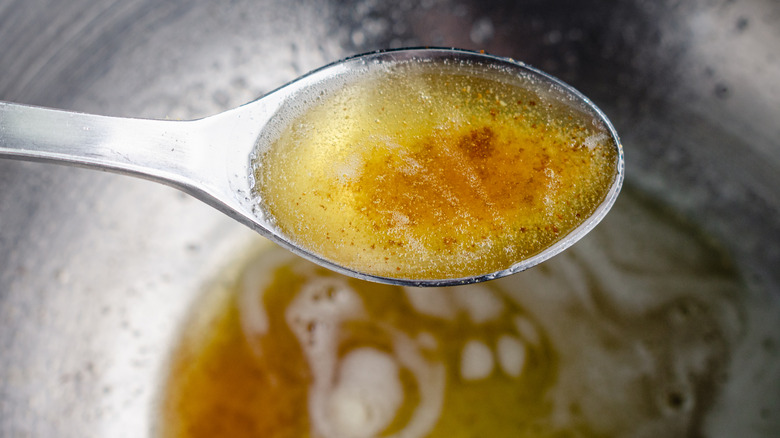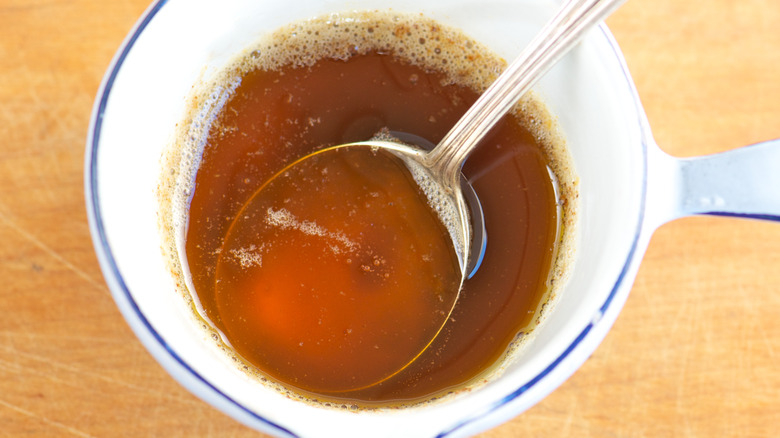Should You Be Straining Brown Butter?
Home bakers and professional cooks alike call brown butter "liquid gold," and it's for a good reason. The stuff is literally caramelized butter, and although it tastes much more complex than standard melted butter, it can easily be incorporated into so many dishes and recipes, adding a rich nutty flavor. But when it comes to preparing brown butter, the question at hand is whether or not to strain it for a smoother appearance and texture. While there are good arguments on both sides of this debate, for sake of flavor, we suggest that you try not to strain your brown butter.
The grains found in brown butter are the toasted milk solids that have sunk to the bottom of the liquid fat. These specks of goodness are the primary reason brown butter is so delicious: The browned milk solids have an overwhelming caramel flavor that makes any dish taste like melted candy.
Don't strain out the flavor of your browned butter
When you let butter toast until it takes on an amber color, the Maillard reaction is taking place within the milk solids. This chemical process is responsible for the flavor changing and growing sweeter in anything you toast or caramelize. Butter –which is a blend of fats, proteins, a bit of milk sugar, and water — undergoes evaporation before it browns. With much of the excess water evaporated, what you have left in the pan is a heavily concentrated butter. At this stage, the milk proteins and sugars separate from the liquid fat as they undergo caramelization. The fatty acids begin to brown too, creating that liquid gold you can add to so many recipes.
For baked goods like cookies or bread, we suggest that you keep the milk sediments in your brown butter for extra oomph. In fact, you can even add powdered milk to your brown butter for even more milk solids (and more flavor). If you're really keen on a cleaner brown butter sauce, you can strain the whole thing so that there are no specks in the liquid, but you will lose some flavor. Straining is also useful if you've accidentally overly browned your butter. In this case, you can use a strainer to remove some of the worst burnt milk solids. In general, though we're fans of those precious milk proteins found in brown butter so leave them where they are and enjoy the sweet, nutty flavor they impart.

